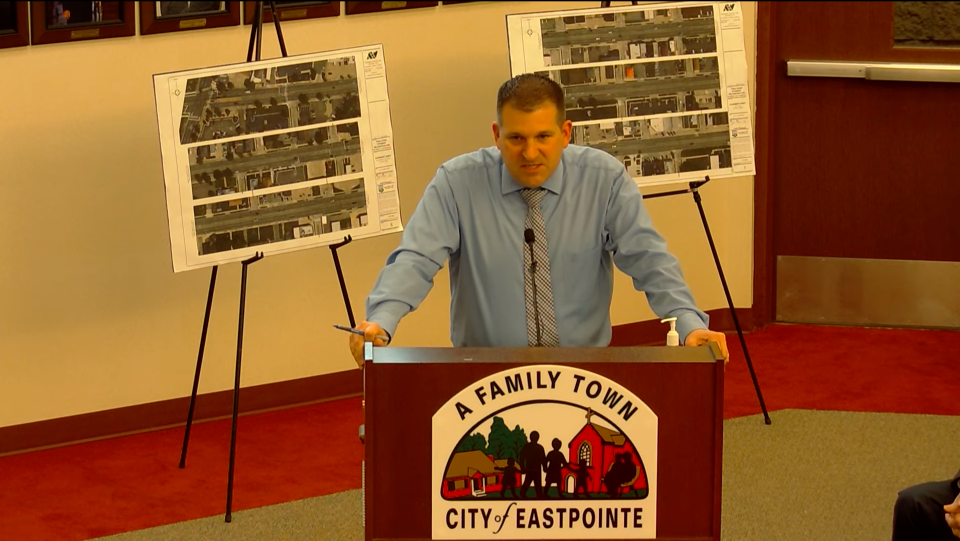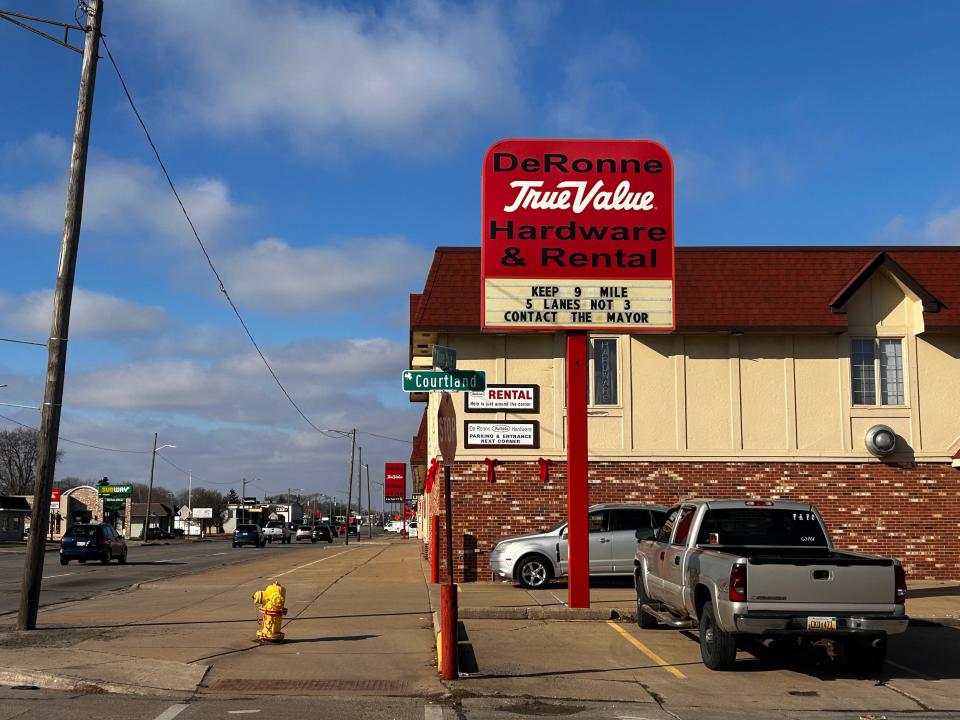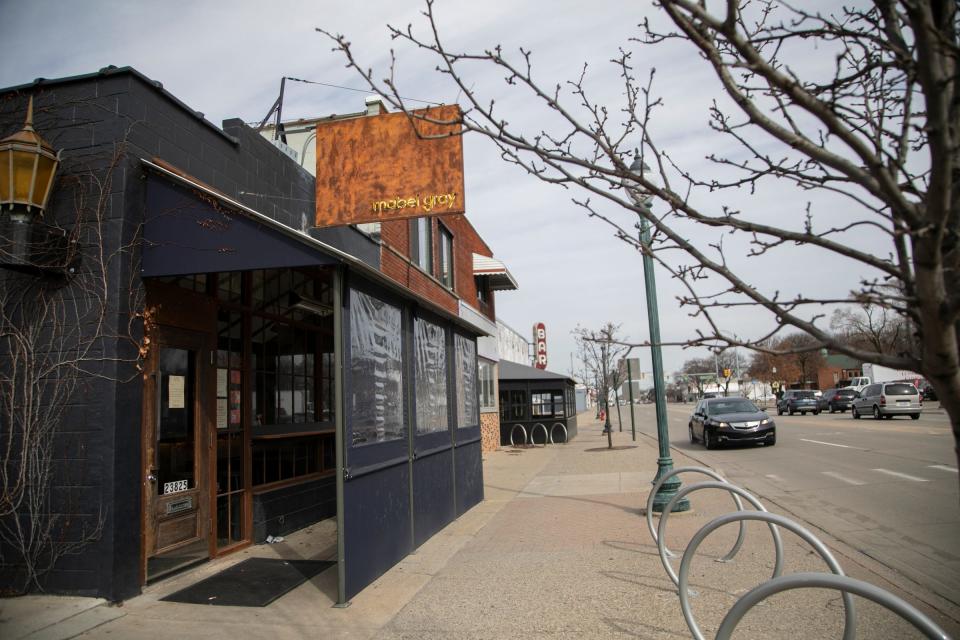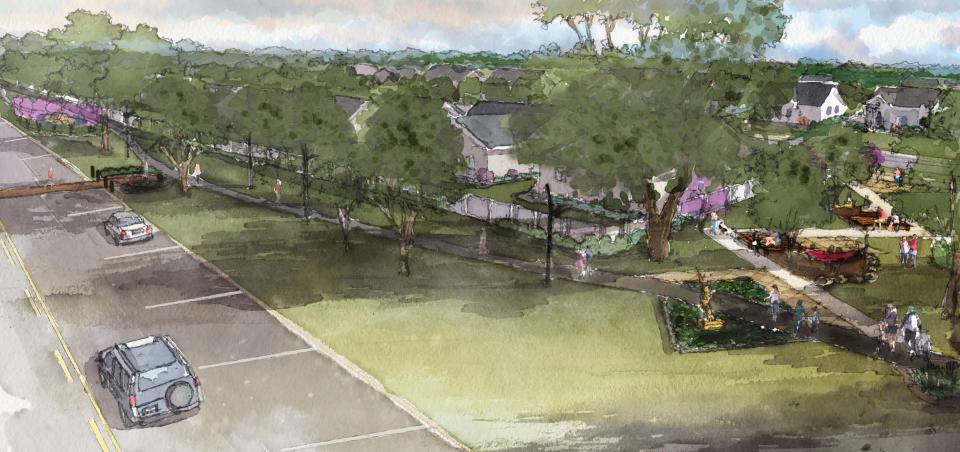Eastpointe's road diet plan: Safety solution or business killer?
An intense debate over the effectiveness of road diets is consuming the city of Eastpointe, with its City Council and community at odds over the true purpose of the trending development fad.
Eastpointe City Council approved a road diet plan for East Nine Mile on Feb. 6, despite strong pushback from the city’s fire and police departments, and nearly all area business owners.
The "road diet" is a popular infrastructure design that prioritizes pedestrian, bicycle and motorcycle traffic over automobiles — and claims to be the solution to increased overall safety and greater small business traffic.

Eastpointe’s current plan calls for reducing the lanes of the stretch between Gratiot and Kelley from five to three, minimizing one lane from each direction and adding greenspace to either side. There is room for adjustment in the proposal to add extended crosswalks and bike lanes, which are not currently included in the $40,000 budget estimation.
Councilman Rob Baker, a 16-year resident and four-year representative of Eastpointe, voted against the road diet project — saying it was discouraging to hear the council so blatantly ignore the community’s concerns about increased traffic on an already congested road.
More: Eastpointe City Council approves road diet plan despite police and fire pushback
"Our business owners felt that diverting traffic away from Nine Mile, would negatively impact them, and I believe these are legitimate concerns for them to have,” Baker said. “There are residents who spoke of having loved ones with health challenges, and how they view response times as being crucial to them getting the care that they need.”
Owner of DeRonne Hardware & Rental, David DeRonne has operated his business along Nine Mile Road for 33 years and said it’s hard enough for him to manage the customers pulling into his shop, and it could only get worse with fewer lanes.

"We need to have footsteps in our brick-and-mortar store to keep (our) employees employed," DeRonne said at the Feb. 6 council meeting. "By reducing Nine Mile, it's going to reduce traffic — and it's going to reduce our customer count. Our business will be negatively impacted."
Eastpointe’s City Council ended up voting 3-2 to approve the three-lane road diet, with Councilmembers Cardi Demonaco and Margaret Podsiadlik, and Mayor Michael Klinefelt in support and members Baker and Harvey Curley against.
Police and fire have concerns
After nearly three hours of public comment and a two-hour discussion by council members, Eastpointe Fire Chief Brian Marquardt was asked for his department’s opinion. He said a three-lane plan just won’t work.
Marquardt said the fire department located along Nine Mile Road needs all five lanes to back up its ladder truck and make turns fully, and said Feb. 6 City Council meeting that the three-lane road diet just isn’t feasible.
“If the council decides to do this, again, I cannot support it (the lane reductions) as the fire chief,” he said before the 3-2 vote in support of the road diet.
Police Chief Corey Haines, who began leading the department last summer, said he knows this proposal is bound to cause a public safety concern.
“Shortening it down to three lanes is going to cause issues I promise you,” Haines told the council prior to the vote. “I’ve talked to these officers and I’ve talked to my command staff and we all agree: It’s not the right thing to do.”
After the council voted to approve the road diet, Marquardt and Haines declined to comment further.
In defense of his vote during the council meeting, Klinefelt said he sees countless areas for opportunity and growth along Nine Mile that may not be possible without a greater focus on pedestrian safety.
“There are a lot of vacant areas — and a lot of our businesses are car-oriented or party stores or drive-thrus — and I think the reason for that is because our infrastructure doesn’t allow for any other friendlier development for small businesses,” he said.
A September 2022 study by the city of Detroit includes a AAA study reporting, “A person hit by a car traveling 35 mph is five times more likely to die than a person hit by a car traveling 20 mph.” The city’s speed hump program can’t make enough of a difference, according to the report.
Nearly 35% of all vehicle accidents involving a death or incapacitating injury occur on 3% of the city’s streets, known as the High Injury Network (HIN). More than 60% of HIN is made up of streets owned by Wayne County or the state of Michigan.
The report recommends six potential road diets as the best solution.
Rewind: Autos vs. bikes: Watch for shrinking roads in metro Detroit
Where has Michigan already implemented road diets, and how has it gone?
Hazel Park
Hazel Park completely reimagined its business district over the last six years, from a city surviving on revenue from the Hazel Park Raceway, which closed in 2018, to an area known for its bustling downtown district packed with restaurants and stores.
Its secret to success: a road diet along John R from Eight Mile to 10 Mile. By focusing on increasing walkability for visitors on this commercial stretch, the city’s residents are 29% more likely to walk, bike or use public transport than those in other areas.
More: Hazel Park is working to create a walkable business district: Here's what's changed so far
Some of the most popular restaurants include Mabel Gray, which serves American cuisine with no set menu, and Frame, FRAMEbar and the Frame BIG TOP, an American restaurant that focuses on elevating chefs and farms. And the former raceway property is now home to BorgWarner, LG and Amazon facilities in an area dubbed a “high-tech hub.”

Ferndale and Pleasant Ridge
Ferndale finished its latest road diet project last fall, transforming a 2-mile stretch of Woodward Avenue in Ferndale and Pleasant Ridge, and includes two-lane bike paths in either direction with safety bumpers along the curb.
Rewind: At birthplace of Dream Cruise, Woodward Avenue to lose lanes for safer cycling and walking
Livernois Avenue went down from four to three lanes in 2018, and then down to two lanes during the 2022 Livernois Streetscape Project. Detroit’s Avenue of Fashion thrives within the stretch between Clarita and Seven Mile, filled with legacy family businesses offering everything from hair care and eye care to pet supplies.
More: Owner of House of Morrison Shoe Repair is Queen Mother of Detroit's Avenue of Fashion
The emphasis on slower speeds and safer pedestrian crosswalks have made for an attractive business scene and more walkable downtown.
Oak Park
Oak Park began its planning process for a Nine Mile Redesign in 2014, breaking ground and completing a three-phase road diet project in 2019.

The project starts at Pinecrest Avenue in Ferndale and amenities include two “pocket parks,” bike lanes and a walking path, dense angle parking in some areas while other spots get conventional parallel parking, bike racks and bike lockers, drinking fountains, ornamental landscaping, an all-weather map under a roofed kiosk with a bike-repair station, decorative pavement, an upgraded bus stop, and enhanced bike and pedestrian crossings.
The city has created a community Facebook page to celebrate the new businesses and milestones along the newly redesigned Nine Mile.
Birmingham
Birmingham is calling for a road diet along its portion of Woodward Avenue after a Michigan Department of Transporation study found between 20,000 and 65,000 vehicles travel the road daily as fast as 50 mph, with the most congestion between Interstate 696 and 14 Mile.
The roadway famous for its rich automobile history underwent a major design in 2017, adding safer, wider crosswalks, traffic lights and 50 trees — while maintaining the four-lane structure and higher speed limit.
More: Why the new Woodward Avenue is better than the old one
Royal Oak
Royal Oak completed a one-lane road reduction on Rochester Road last year after a year of public discourse. As in other cities, the majority of residents and business owners reported fears of increased traffic on a road that sees an average of 15,000 to 20,000 vehicles per day, as of 2019.
Before Rochester Road, the city implemented lane conversations at East Fourth Street in 2015, and North Main Street and South Campbell Road in 2018. The city has a website of common misconceptions with data to support the efficacy of road diets.
Berkley
The Coolidge Road Complete Streets Project reduced Coolidge Highway from 11 Mile and 12 Mile from four to three lanes in 2022.
The project was aimed at diverting traffic flow into the surrounding neighborhoods by increasing the traffic flow and making for safer pedestrian traffic.
Detroit and Dearborn
Detroit’s East Jefferson project, which included metro Detroit’s first protected bike lanes, removed one lane from either direction in five blocks from Ashland to Lakewood, in the Jefferson Chalmers neighborhood.
More: Drivers could lose car lanes on Woodward Avenue in 2020
Dearborn received $24.8 million in federal grants in December 2023 to put Warren Avenue on a diet. The city’s 2-mile main business corridor can expect to see streamlined traffic with larger pedestrian walkways and bike paths.
This article originally appeared on Detroit Free Press: Eastpointe city council approves controversial road diet plan

